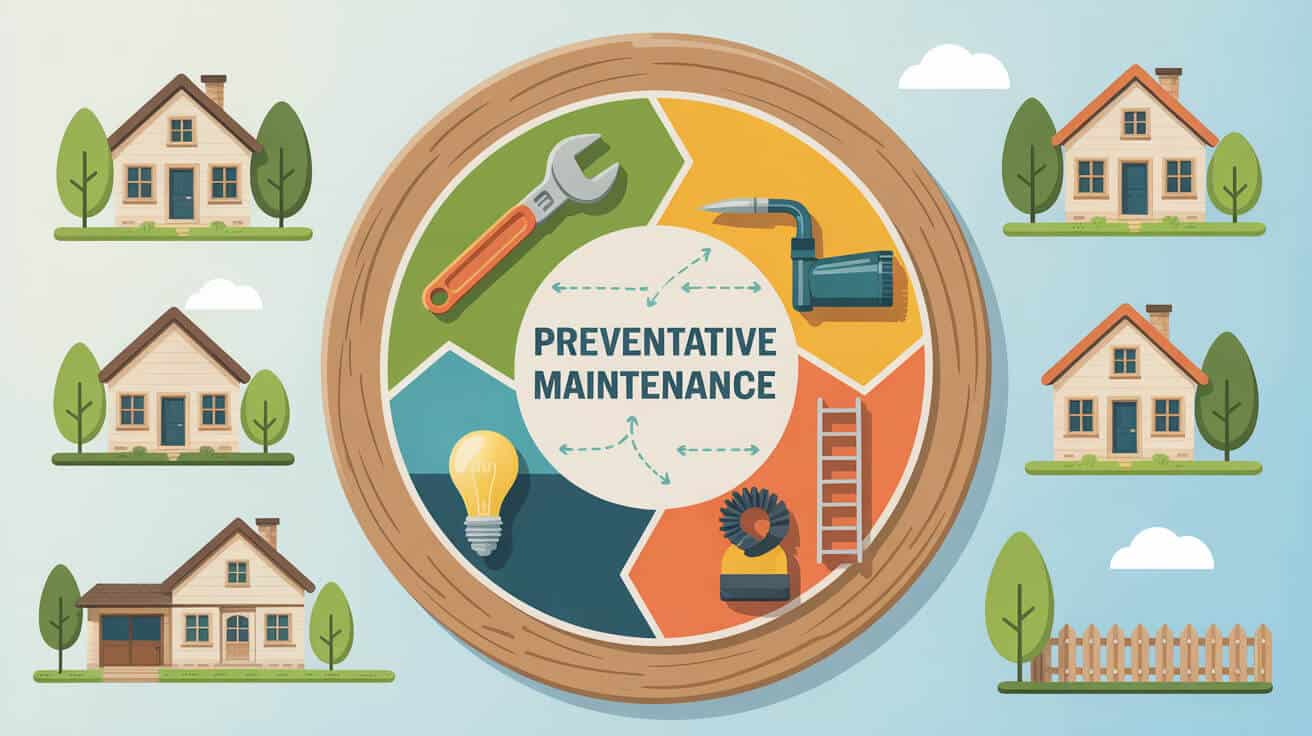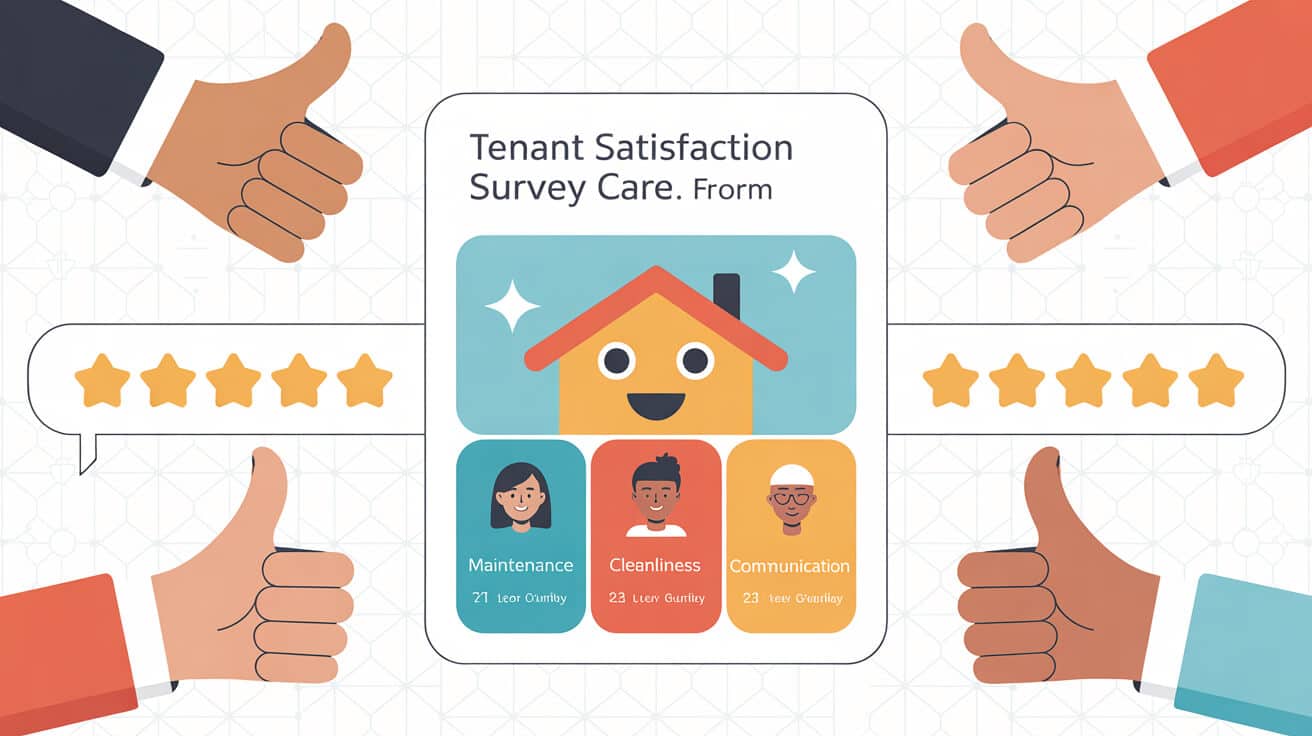 Understanding The 1% Rule For Budgeting Property Maintenance
Understanding The 1% Rule For Budgeting Property Maintenance

Why Do So Many Property Owners Get Sideswiped by Maintenance Bills?
There’s a reason property owners—from single-flat landlords to facilities managers running entire portfolios—find themselves hit by repair bills at the worst possible times: unpredictable costs, compressed timelines, and expenses that stack up with zero warning. What’s remarkable is that neglect isn’t usually the root cause; instead, the real threat is the slow build-up of minor issues that are easy to set aside—until they erupt at full force.
It’s not what you see on the inspection form that hurts your budget—it’s what quietly festers out of sight.
If you’ve ever caught yourself waving off a “small leak” or shelving a bit of loose pointing because the cash flow looked tight that month, you’re not alone. Across the UK, seemingly harmless jobs—missing tiles, hairline cracks, a slow drain—so often set off chains of much larger complications. Damp advances under the boards, quotes for repairs multiply, and regulatory flags from EICR or gas safety checks suddenly pull money directly from your best quarter.
Here’s what blindsides owners and managers: they think a slow or reactive approach is “saving money,” yet the opposite proves true. Studies reveal that owners lacking a ringfenced maintenance reserve drain their funds twice as quickly on unplanned repairs as those who structure a reserve (zippyfins.co.uk). Even skipping a straightforward repair—like that loose tile—can escalate to ceiling replacements over £1,200. Hold off too long on compliance tasks and you risk not just steep fines, but multi-month rental voids.
The critical gap isn’t effort or technical skills; it’s a lack of evidence-based, bankable budgeting. Most property people lean on optimism or a catch-all “rainy day fund.” Compliance checks—annual gas, electrics, fire safety—turn into crises instead of planned events. With each unplanned hit, your profit margin leaks away too.
The properties with fewer headaches and better returns don’t get there by luck, and their owners aren’t necessarily working harder—they’re simply out-planning chaos. The solution adopted by professionals, recommended in finance guides, and verified in UK case studies? The 1% Rule—a strong starting point that transforms gut-feel into proactive budgeting.
What Is the 1% Rule—and Is It a Reliable Guide for UK Maintenance Budgeting?

The 1% Rule is a straightforward, evidence-backed method: budget 1% of your property’s value every year for all maintenance and compliance costs. On a £250,000 property, that means setting aside £2,500 per year—covering everything from planned repairs to new regulations, not just emergencies.
This approach isn’t a secret handshake among property insiders—it appears in landlord handbooks, mortgage lending advice, and even insurance best-practice guides. The strength of the 1% Rule is simplicity: it provides a clear, actionable savings target, shielding you from “unknown unknowns.” Whether you’re renting out a flat or running a small chain of shops, it keeps costs predictable and protects your profit line.
- Works for most property types: flats, houses, HMOs, and standard commercial spaces.
- Bakes in compliance margin: covers not just break-fix jobs, but also required certifications and updates.
- Promoted by credible voices: “The 1% Rule is standard in professional landlord and mortgage guides; it’s used frequently in London and other high-turnover UK cities” ([bluestoneproperties.co.uk](https://www.bluestoneproperties.co.uk/news/how-to-budget-for-rental-property-repairs-a-practical-guide-for-landlords-in-london?utm_source=openai)).
How to Apply the 1% Rule (Step-by-Step)
- Reference today’s market or insurance value: —not a dated number.
- Calculate 1% of that value: (e.g., £300,000 × 0.01 = £3,000/year).
- Break it into monthly savings: —parked in a separate reserve account, ready for both emergencies and compliance.
- Prioritise essentials: —repairs, renewals, and legal checks come first; discretionary upgrades deserve their own category.
- Stick to the discipline: —withdraw only for property-related issues, not holidays or upgrades.
This system offers comfort and control, but it’s not a “one size fits all.” High-risk properties, heritage assets, or heavily tenanted spaces will likely outpace this rule. For the median UK rental, though, it’s a lifeline in transforming stress into structure.
It’s not how many issues you avoid—it’s whether you’ve already funded the ones you can’t predict.
When Does the 1% Rule Fall Short? Risk Factors That Drive Up Costs

No budgeting rule is bulletproof—and if you’re sitting on a period home, a high-spec build, or a “fixer upper,” the 1% Rule isn’t enough. Here are three proven risk multipliers that can throw your numbers out the window:
-
Older or Heritage Properties
Victorian, Edwardian, and properties from before the 1950s face costly surprises. Timber, plumbing, and even wiring may need annual interventions that drive costs to two, three, or even four percent of asset value. Heritage status for listed buildings adds compliance and specialist costs. -
Complex or Unique Features
Got flat roofs, cellars, designer glazing, a private pool, or specialty finishes? These aren’t just aesthetic—they generate higher labour bills and require rare skills. Expect repairs and replacements to cost more, and factor in longer lead times, especially during supply shortages (pma-dc.com). -
Tough Location Factors
Properties at the coast, in remote countryside, or busy city centres face different risks—from salt and wind erosion to high foot traffic and security costs. Data from the ONS suggests costs can rise by 20% relative to protected, suburban sites with standard features.
The real cost drivers are always the elements you don’t see at turnover—they’re embedded in the building’s fabric, location, or historical quirks.
The take-home for owners of more complex assets, HMOs, or regeneration projects? Use the 1% Rule as a baseline—then commission a hands-on risk review with a trusted technician (like Hector Gauge at All Services 4U). This step ensures your reserve matches the actual risk, not just the spreadsheet expectation.
Are There Quicker Shortcuts to Budgeting Than the 1% Rule?

Plenty of owners want faster answers than the 1% Rule provides—especially when accurate values aren’t handy or a property is atypical. Shortcut rules can help, but come with their own caveats. Here’s what’s in regular use:
- £1 per Square Foot:
Helpful for city-centre flats, where area data is reliable and values shift quickly. A 1,200 ft² flat gets a £1,200 annual reserve.
- 10% of Gross Rent:
For pure rental-focused owners, stashing 10% of your gross monthly rent covers routine wear (so, £1,800/year on a £1,500/month property).
- 50% Rule:
Favoured by major investors: expect all costs (maintenance, voids, management) to eat half of net rental income—a broad but safe approach (nestwell.helpscoutdocs.com).
You’re not locked into a single rule. Many seasoned managers overlay these methods—using square footage for flats, rental percentage for buy-to-lets, and a higher percentage for exposed or complex assets.
Rapid Comparison: Common Budgeting Formulas
Suppose your property is valued at £200,000:
| Method | Annual Budget | Ideal Scenario |
|---|---|---|
| 1% Rule | £2,000 | Most homes and rentals |
| £1/sq ft (1,000ft²) | £1,000 | Compact flats, city units |
| 10% Rent (£1.5k/mo) | £1,800 | Rental portfolios |
| 50% Rule | £9,000 | High-risk, multi-unit, or complex portfolios |
Don’t forget: heritage, remote, or “high-turnover” assets should raise their target closer to 2–4% for resilience.
Rules are speed bumps, not speed limits. Shortcut without reviewing your specifics and you could end up badly underfunded.
What Drives Maintenance Budgets Up—or Down—Year to Year?

The race to a predictable repair budget isn’t about picking the right number—it’s about staying nimble as your asset ages, regulations change, or use patterns shift. What keeps owners and managers safe is the annual reset: controlling for these five levers will do more than following any single rule.
The Five Maintenance Budget Accelerators
-
Property Age and Obsolescence
Homes over 30 years old see sharply climbing maintenance bills. It’s not just the basics; things like heating, insulation, and windows demand more frequent, expensive attention. Failure to anticipate this is a main reason reserves fall short (English Heritage via bluestoneproperties.co.uk). -
Feature Complexity
More bathrooms, custom extensions, a smart home retrofit—all bring more maintenance points. Each added layer of complexity multiplies risk and potential costs. -
Geographic Exposure
A seaside or high-wind location is beautiful, but it also means slate, paint, and guttering will need more frequent professional upkeep—20% above the average. -
Occupancy and Tenant Profile
Multi-let HMOs, student or pet-friendly lets face steeper short-term costs. Each new tenant (or pet!) is a new source of wear and tear. -
New Regulations and Compliance
EICR, fire safety, or EPC upgrades don’t arrive on a schedule—when regulations update, your budget needs to flex with them. Make room for a 10–20% increase during compliance years.
What distinguishes successful property management isn’t how much you save in the short run, but how rigorously you review risk factors and raise reserves for next season’s surprises.
The strongest owners live by annual risk reviews, not just last year’s guesswork.
Where Do Budgeting Apps Help—and Where Do They Fall Short?

In a world of alerts and instant account insights, budgeting apps like Emma, Moneyhub, and Yolt make property maintenance visible and (mostly) trackable. Their advantage is discipline: push notifications keep you topping up the reserve, syncing regular repairs, and avoiding the classic “whoops, we forgot the boiler service” pitfall.
- Proactive Alerts:
Apps flag looming compliance or scheduled works, saving you panic when deadlines approach.
- Budget Discipline:
Enforce 1% Rule contributions or custom targets with slick automation.
- Historical Spend Tracking:
Spot trends across years, surfacing repeated issues—leaky gutter, boiler trouble, or tenant mishaps.
But there’s a big difference between tracking what you already know and spotting the next, big, one-off hit. Apps are only as good as your input, and most fall short at predicting “unknown unknowns”—think 12-year boiler lifecycles or obscure legal requirements.
Apps like Moneyhub and Emma make maintenance spend visible, but only owners who pair digital tracking with expert reviews avoid large, missed costs over multiple years ([moneytothemasses.com](https://moneytothemasses.com/quick-savings/tips/the-best-budgeting-apps-in-the-uk-how-to-budget-without-trying?utm_source=openai)).
Making Apps Work Harder for You
- Use them for routine works, recurring payments, and compliance checks.
- Keep a separate forecasting spreadsheet for “big ticket” and infrequent items.
- Book an annual expert review—All Services 4U provides on-site and digital audits, surfacing hidden risks and margin problems that apps often miss.
Why Annual Reviews Keep You One Step Ahead—Every Time

There’s only so far a rule of thumb or a clever app can take you. The properties that thrive—“minimum stress, max asset value”—are backed by deliberate, annual, in-person reviews.
Annual reviews are about more than box-ticking—they’re a reset for your risk landscape:
- Adapt Reserves to Reality:
After capital works or a year of heavy use, your reserve must adjust; don’t coast on outdated figures.
- Navigate Compliance:
Regulations change; a fresh review puts new requirements front and centre, not as a nasty surprise.
- Catch Early Stage Failures:
Proactive checks find issues—damp, roof intrusion, wear on boilers—before they cause havoc.
All Services 4U’s method combines digital tools and hands-on audits: close-up assessments, drone or ladder surveys, site photography, and laser-focused compliance tracking. The result? You see not just where repairs are due, but which codes, assets, or timespans are most urgent.
Properties reviewed annually slash unplanned maintenance costs by nearly a third over a ten-year period.
Simply put: if you want predictable costs, fewer emergencies, and stronger asset performance, annual reviews make all the difference.
How All Services 4U Delivers Predictable Maintenance—and Peace of Mind

You deserve more than reactive fixes or “cross your fingers” budgeting. All Services 4U deploys multi-trade, City & Guilds and NVQ Level 3 certified, DBS-cleared, IPAF and PASMA-registered technicians like Hector Gauge—ready to deliver high-calibre workmanship across any property challenge.
- Proactive Planning:
Yearly property health reviews and tailored risk maps, not just basic reports.
- Full-spectrum Repairs:
Plumbing, electrics, damp, structural fixes—coordinated for minimal disruption and repeat callouts.
- Clear Communication:
No jargon or evasiveness—each report features photographic evidence, stepwise action plans, and fixed prices; you’re kept in the loop from start to finish.
- Up-to-the-Minute Compliance:
From fire doors to energy ratings, you stay ahead of legal shifts, thanks to real-world expertise and on-site experience.
Why do our clients see lower maintenance costs, less drama, and fewer regulatory headaches? Transparent, skilled, and future-facing support—year after year.
With a support system like this in place, the uncertainty is removed. Instead of hoping broad rules will save you, you build a living system that tracks, adapts, and truly protects both your property’s health and your financial certainty.
Why Luck, Gut-Feel, or “Rules Alone” Put Your Asset at Risk
Nothing derails asset value and peace of mind like treating property as “set and forget.” Hoping for the best, winging it on broad budgeting guides, or only reacting after major faults surface is a recipe for financial pain.
Small jobs deferred become crises. Missed compliance deadlines trigger legal and insurance nightmares. Workers hired in reaction—rather than on plan—often cost more with uneven outcomes. Relying on intuition over structure just stores up more expensive problems for the future.
True property stewardship means recognising each asset is a living system—subject to time, weather, regulation, and human use. The best outcomes go to those who:
- Invest regularly, not reluctantly.
- Combine proven rules (1%, rent-based, or square footage) with real-world, annual reviews.
- Skip the drama and stack the odds in favour of fewer voids, smoother balance sheets, and reputational strength as a proactive, informed owner.
It’s not the problem you budgeted for that takes you down—it’s the one your system missed.
Secure Your Property’s Future with All Services 4U Today
Property ownership isn’t about rolling the dice or chasing repair costs in circles. You want a system—a way to outpace issues before they escalate, keep ahead of compliance, and stabilise your asset’s future cash flow.
All Services 4U offers:
- Comprehensive maintenance reviews tailored to your portfolio.
- Expert on-site diagnosis by seasoned technicians like Hector Gauge.
- Honest, jargon-free reporting with fixed prices and practical timelines.
- Ongoing support—so you always know what’s coming up next, not just what broke last week.
Book your annual review, compliance survey, or bespoke property maintenance action plan today. Gain control that lasts, not just hope for luck. Protect what you’ve built—financially and physically. Give your asset the attention and structure it deserves with All Services 4U by your side.
Frequently Asked Questions
Who gains the most from the 1% rule—and when is it the wrong fit for a property?
The 1% rule is a fast way for owners, landlords, and managers to estimate annual maintenance, but it’s not a universal answer. For newer houses, straightforward commercial spaces, and most mid-market rentals, budgeting 1% of property value each year offers a sensible baseline that lenders and insurers recognise. Where things get shaky is with properties that break the mould—period homes, terraces with timber frames, leasehold flats with shared facilities, or buildings located in coastal areas or urban high-rent zones. Market research published by Zurich and ARLA over the last three years shows these “non-standard” assets often need annual reserves between 1.5% and 4% of value due to more complex safety checks and accelerated wear. If your portfolio includes several different asset types, run a quick audit of each: check age, construction, exposure to the elements, and regulatory profile. The 1% rule is a decent starting point for simple assets and standard homes, but make it your minimum for anything more challenging.
Why does property type change the rule’s accuracy?
- Best fit: Late 20th-century or newer houses, classic buy-to-let, managed flats with predictable occupancy.
- Risky fit: Pre-1980s stock, HMOs, leaseholds with shared structures, buildings in high-moisture or high-turnover locales.
A single rule of thumb shouldn’t decide the future of your largest asset—test it against the reality you own.
What does the 1% rule actually cover—and what expenses blindside most owners?
Setting aside 1% of your property’s value prepares you for ordinary repainting, fixture swaps, appliance upgrades, and basic compliance checks required of UK landlords. Think routine gas and electrical certificates, minor water or electrical faults, and cyclical refreshes to walls or flooring. However, it’s the “exceptions”—unexpected big repairs, compliance deadlines overlapping, or damage after storms or tenant changeovers—that really strain your reserves. New surveys by Propertymark and leading letting agents confirm that when legal obligations “cluster”—for example, if your gas safety, EICR, and new fire door requirements hit at once—costs regularly blow past the 1% reserve. If you own a leasehold or manage a property in a block, shared liability for shared repairs can also erupt without warning, more so when a reserve fund runs low. Owners whose properties see frequent churn or are in older blocks should consider openly tracking every compliance deadline and increasing their annual reserve to at least 1.5% to 2% in high-risk years.
Which property costs often outstrip a 1% annual buffer?
- Simultaneous compliance checks (gas, fire, EICR, EPC all at once)
- Major replacements (boiler, roof, sash windows)
- Service charges or block repairs for leaseholders
- Moisture, damp, or structural fixes after severe weather or a heavy tenant turnover
How can owners spot when the 1% rule falls short—and what steps make up the gap?
The most reliable warning sign? Maintenance costs that rise faster than your budget—even in “normal” years. Properties built before 1980, or those with structural quirks and crowded occupancy, consistently overshoot the 1% threshold. If you own a short-term let, HMO, or unit with high turnover, expect higher repair and compliance cycles. Data from the English Private Landlord Survey indicates that owners with older or multiple-occupancy homes spend up to double the baseline reserve. The real squeeze happens during “event years” when several big expenses hit together. To right the ship, start with a stock condition survey and review three years of actual spend (not just invoices, but regulatory work done). Blend that with a square-foot calculation or a rent-linked buffer for better predictive power. Owners who layer at least two models (e.g., 1% of value plus a per-square-foot addition) nearly halve their surprise costs, according to recent Savills benchmarking.
What signals should push owners to exceed the 1% minimum?
- Building age: pre-1980 or poor records
- Complex or unique features (flat roofs, basements, non-standard electrics)
- Tenancies with high churn (HMOs, Airbnbs, city-centre flats)
- Responsibility for communal areas or leasehold block reserves
- Rapidly changing safety or rental regulations in your region
Maintenance reserves set by formula get outpaced by reality; adapt your buffer before your building forces you.
Which formulas help owners move past “one-size-fits-all” property maintenance budgeting?
Property management pros don’t settle for just one model anymore. Alternatives like “£1 per square foot,” “10% of gross rent,” or the “50% rule” are becoming mainstream—especially as portfolios diversify and regulations intensify. Here is how top-performing property managers now build their budgets:
| Method | Sample Use-Case | Suited For |
|---|---|---|
| 1% Rule | £3,000/year on a £300k house | Newer homes, standard BTL |
| £1 per Sq Ft | £950 for a 950sqft city flat | Urban apartments, new builds |
| 10% of Rent | £1,800 off £1,500/month let | High-yield, short-term or multi-lets |
| 50% Rule | Half gross rent (inc. voids) | Portfolio owners, high-risk mixed assets |
Experienced landlords now “blend” models—using 1% for baseline, then topping up with rent or sqft rules for volatile years. For heritage, high-turnover, or HMO assets, managers often aim for the highest of all formulas. City portfolios, especially in London or Manchester, increasingly use square-foot as ground rents and size trump capital value for repair exposure.
When should you blend or switch budgeting models?
- Your gross rent far exceeds typical capital values (city centre, HMOs)
- You own assets of widely differing ages, uses, or compliance profiles
- You face frequent service charge shocks (leaseholds, blocks)
- Regulatory changes or green retrofits loom on your upgrade calendar
How are digital platforms redefining the way owners and managers budget for property maintenance?
Digital property management tools like Soldo, Emma, and Landlord Vision are enabling a shift to live expense tracking, automated reserve transfers, and compliance reminders. Linking your accounts through these systems creates a rhythm for monthly top-ups, photo/scan receipts, and compliance milestone alerts—all of which shrink the risk of gaps or late payments. A big win: easy collaboration with accountants, letting agents, and co-owners who gain universal access to maintenance logs and reports.
But these tools don’t catch everything. Apps won’t always distinguish between a planned cyclical repaint and a major water ingress repair, and one-off “cluster” spends can still slip by unflagged. That’s why managers using digital platforms perform an annual “manual override”—reviewing physical receipts for all unexpected or big-ticket jobs, then adapting the next year’s buffer and reminders accordingly. Giving trusted partners access to your dashboard can reduce errors and improve response times if a sudden large spend is flagged.
Best-practice digital routines for sharper budget control
- Assign custom tags/reminders for every compliance event
- Review category “drift” quarterly—catch expenses in wrong buckets
- Allow shared dashboard access for agents/accountants to speed up responses
- Schedule a manual “year in review” to update cost assumptions and repair timelines
Real-time property spend visibility is the new normal—predictability only happens if you guide what the data shows.
How does access to certified professionals reshape your property’s maintenance forecast and risk?
There’s no algorithm that replaces the judgement—and availability—of an accredited technician or a genuinely proactive maintenance team. All Services 4U, staffed by experts like Hector Gauge, gives owners leverage through systematic risk mapping, digital documentation, and compliance-first repair workflows. Instead of betting on a single estimate, certified pros run diagnostics, anticipate upcoming regulation, and provide evidence-led repair plans with traceable records, often shaving 25%–40% off surprise outlays over five years (based on cross-sector FM portfolio analytics 2021–2024). The services include photo documentation after every completed job, up-to-date compliance reporting, and instant escalation for urgent risks or evolving regulations. The result is a hands-off experience that translates directly to better resale valuations, cleaner audit trails, and lower tenant turnover.
Owners who invest in multidisciplinary maintenance teams not only silence their own budgeting doubts, but become leaders among their peers—no more lagging behind legal changes, or missing key safety improvements due to oversight. For a property that resists surprises instead of surrendering to them, specialist support is the edge.
Market volatility hurts amateurs first—let the professionals remove the risk, so your property runs on autopilot for the long term.
Ready to take budget worries off your plate? Connect with All Services 4U now to tailor your property’s maintenance, compliance, and future performance to your unique asset—never just an average.



